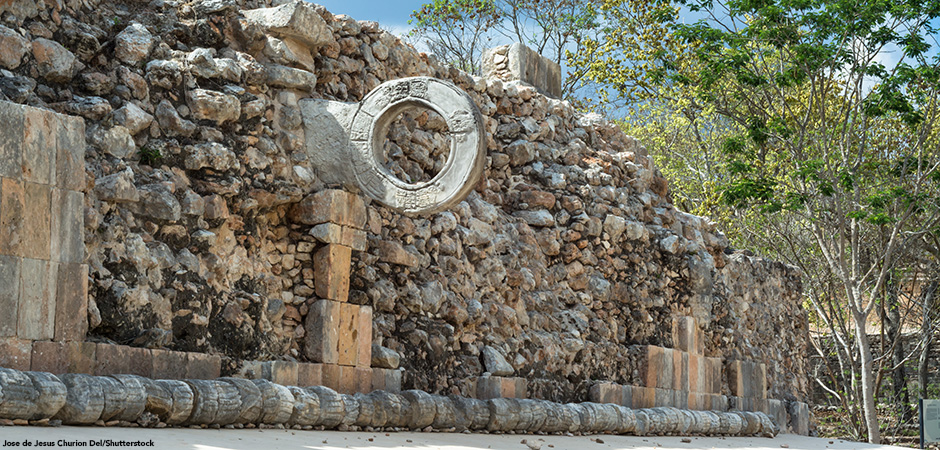
The Maya civilization once played a game called pelota. Archaeologists have uncovered many artifacts related to the game. Now, archaeologists in Mexico have discovered what they believe is an ancient pelota scoreboard. The scientist who discovered the scoreboard hopes that it reveals more about daily life in Maya civilizations. Here, btw takes a closer look at this exciting discovery.
What Happened?
Lizbeth Beatriz Mendicut Perez recently found a stone at Chichen Itza, the remains of a Maya city located on Mexico’s Yucatan Peninsula. The stone was found at Casa Colorada (Red House), one of Chichen Itza’s best-preserved buildings. The stone was found face-down and underground. This has led archaeologists to believe it was probably originally part of an archway at the entrance to the building and that it fell when the archway collapsed.
What Does the Stone Look Like?
The stone itself is round, about 12.8 inches in diameter, and weighs 88 pounds. Scientists estimate that it is around 1,200 years old. The stone is carved with the image of two pelota players. One wears an elaborate feather headdress, while the other is portrayed with snakes wrapped around his head. The second player is also wearing protective gear typically used in the game. Around the perimeter of the stone is hieroglyphic writing, which scientists are working to decipher. It has been eleven years since a complete hieroglyphic text like this one was discovered, so scientists are excited for what it may show about ancient Maya life.
What Was Pelota?
The game of pelota was played throughout Mesoamerica thousands of years ago, from the Caribbean to the southwestern United States. Several variations of the game existed, but scientists have been able to learn a lot about the general rules by studying surviving artifacts and texts. Pelota was played on a court, with a heavy ball made of rubber. More than 1,500 of these pelota courts have been discovered throughout Mesoamerica–some of them surrounded by stands or viewing areas. (The pelota court at Chichen Itza is the largest in the world: 316 feet long by 98 feet wide. That makes the Chichen Itza court almost as long as a football field, but half of its width.) In some versions of the game, players scored points by moving a ball through rings, while in others, points were scored by hitting the ball against certain markers. The goal was to keep the ball moving at all times. Players were required to hit the ball with their torsos, rather than their hands or feet, which is why the protective gear was important.
Pelota was a sport enjoyed by all classes of people. But pelota wasn’t just for recreational purposes. The game also had a symbolic meaning. The game represented the battle between day and night, or between life and death. For this reason, courts were often placed in ceremonial centers, close to temples and shrines. Many contained stone sculptures.
